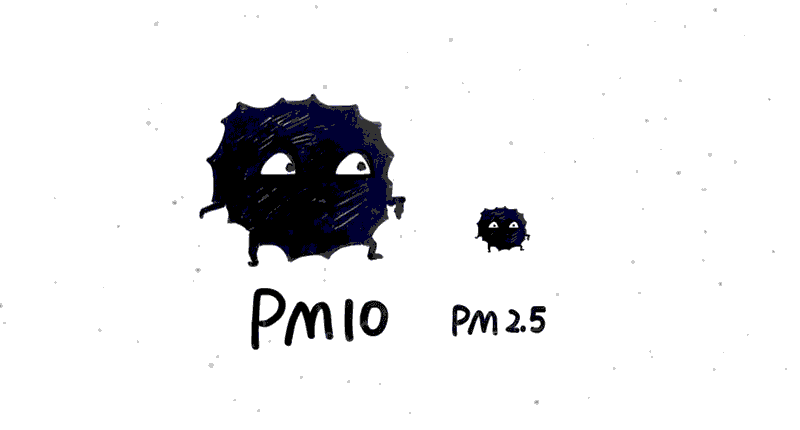

— Blogs —
—Products—
 Consumer hotline +8618073152920
Consumer hotline +8618073152920 WhatsApp:+8615367865107
Address:Room 102, District D, Houhu Industrial Park, Yuelu District, Changsha City, Hunan Province, China
Product knowledge
Time:2024-05-18 12:18:01 Popularity:1037
Dust monitoring is the process of real-time monitoring of the concentration of suspended particulate matter in the air, especially fine particulate matter such as PM2.5 (which is defined as particulate matter in the atmosphere with a diameter less than or equal to 2.5 micrometres). The purpose of dust monitoring is to assess air quality, prevent and control air pollution, and protect human health. Dust monitoring usually involves the use of specialised instruments, such as PM2.5 sensors, to measure the concentration of particulate matter in the air.

Sites requiring dust monitoring include, but are not limited to:
1. construction sites: the construction process generates a large amount of dust, which affects the surrounding environment and the health of construction workers.
2. road construction: road construction generates dust, which affects traffic and the air quality of neighbouring residents.
3. industrial plants: industrial production processes may generate dust, which needs to be monitored to ensure worker health and compliance with environmental regulations.
4. Mining areas: Mining operations such as mining and transport generate a lot of dust that needs to be monitored and controlled.
5. Urban environments: Dust and exhaust fumes in cities can lead to reduced air quality and need to be monitored on a regular basis.
6. Warehousing and logistics: operations such as material handling, loading and unloading generate dust that needs to be monitored to maintain indoor air quality.
7. public areas such as parks, schools, hospitals, etc.: the air quality in these areas also has an important impact on public health and requires regular monitoring.
In dust monitoring, PM2.5 sensors can detect the concentration of PM2.5 particulate matter in the air in real time, providing reliable data support for construction sites. When the PM2.5 concentration is detected to exceed the preset safety standard, the sensor will trigger an alarm to remind the construction personnel to take appropriate dust reduction measures, such as increasing the frequency of sprinkling and switching on fog cannons, in order to reduce the impact of dust on air quality.
In addition, the PM2.5 sensor can also be used in conjunction with the dust reduction and haze removal linkage control system. When the sensor detects that the dust concentration exceeds the standard, the system will automatically start the dust reduction equipment, such as spraying, fog, etc., to achieve intelligent dust reduction. This not only effectively reduces dust, but also saves human resources and improves dust reduction efficiency.
The following are some specific application cases of PM2.5 sensors:
1. Manufacturing factories: In manufacturing factories, the production process may generate a large amount of dust, such as metal processing, grinding, painting, etc. PM2.5 sensors can be installed in the production line or workshop air, real-time monitoring of dust concentration to ensure that the working environment meets the health and safety standards, and to prevent the risk of dust explosion.
2. Mining: Mining and processing generate a large amount of dust. PM2.5 sensors can be deployed at key locations such as mine entrances and near haulage roads to monitor dust emissions and help mine management take appropriate dust reduction measures to reduce the impact on the surrounding environment.
3. Energy generation: thermal power plants, wind farms and other energy generation facilities generate dust during coal combustion, material transport, etc. PM2.5 sensors can be used to monitor the concentration of particles in the emissions to ensure that the emissions are in compliance with environmental regulations, and to reduce dust emissions through automatic control equipment.
4. Iron and steel mills: Iron and steel production processes, such as ironmaking, steelmaking, rolling, etc., will produce a large amount of dust. PM2.5 sensors can be used to monitor the concentration of dust in the production process, and through the control system to adjust the production process, in order to reduce dust emissions.
5. chemical companies: chemical production processes may produce harmful dust, such as chemical powders, powdered by-products, etc. PM2.5 sensors can be used to monitor the concentration of these dusts, to ensure the safety of the work area, and to control the spread of dust through the ventilation system.
6. Landfill: The landfill process generates organic dust from the decomposition of waste, and PM2.5 sensors can be used to monitor the concentration of this dust to protect the health of neighbouring residents.
In short, in these application cases, PM2.5 sensors can not only provide real-time, accurate dust concentration data, but also help companies to find and solve the dust pollution problem in a timely manner, improve the safety and comfort of the production environment, and reduce the hazards to the health of workers. It can also help relevant departments and enterprises to develop effective pollution prevention and control measures to improve environmental quality and protect people's health.
Prev:Difference between PM2.5 sensor and PM10 sensor
Next:Advantages and disadvantages of PM2.5 sensors and application
Related recommendations
Sensors & Weather Stations Catalog
Agriculture Sensors and Weather Stations Catalog-NiuBoL.pdf
Weather Stations Catalog-NiuBoL.pdf
Related products
 Combined air temperature and relative humidity sensor
Combined air temperature and relative humidity sensor Soil Moisture Temperature sensor for irrigation
Soil Moisture Temperature sensor for irrigation Soil pH sensor RS485 soil Testing instrument soil ph meter for agriculture
Soil pH sensor RS485 soil Testing instrument soil ph meter for agriculture Wind Speed sensor Output Modbus/RS485/Analog/0-5V/4-20mA
Wind Speed sensor Output Modbus/RS485/Analog/0-5V/4-20mA Tipping bucket rain gauge for weather monitoring auto rainfall sensor RS485/Outdoor/stainless steel
Tipping bucket rain gauge for weather monitoring auto rainfall sensor RS485/Outdoor/stainless steel Pyranometer Solar Radiation Sensor 4-20mA/RS485
Pyranometer Solar Radiation Sensor 4-20mA/RS485
Screenshot, WhatsApp to identify the QR code
WhatsApp number:+8615367865107
(Click on WhatsApp to copy and add friends)
